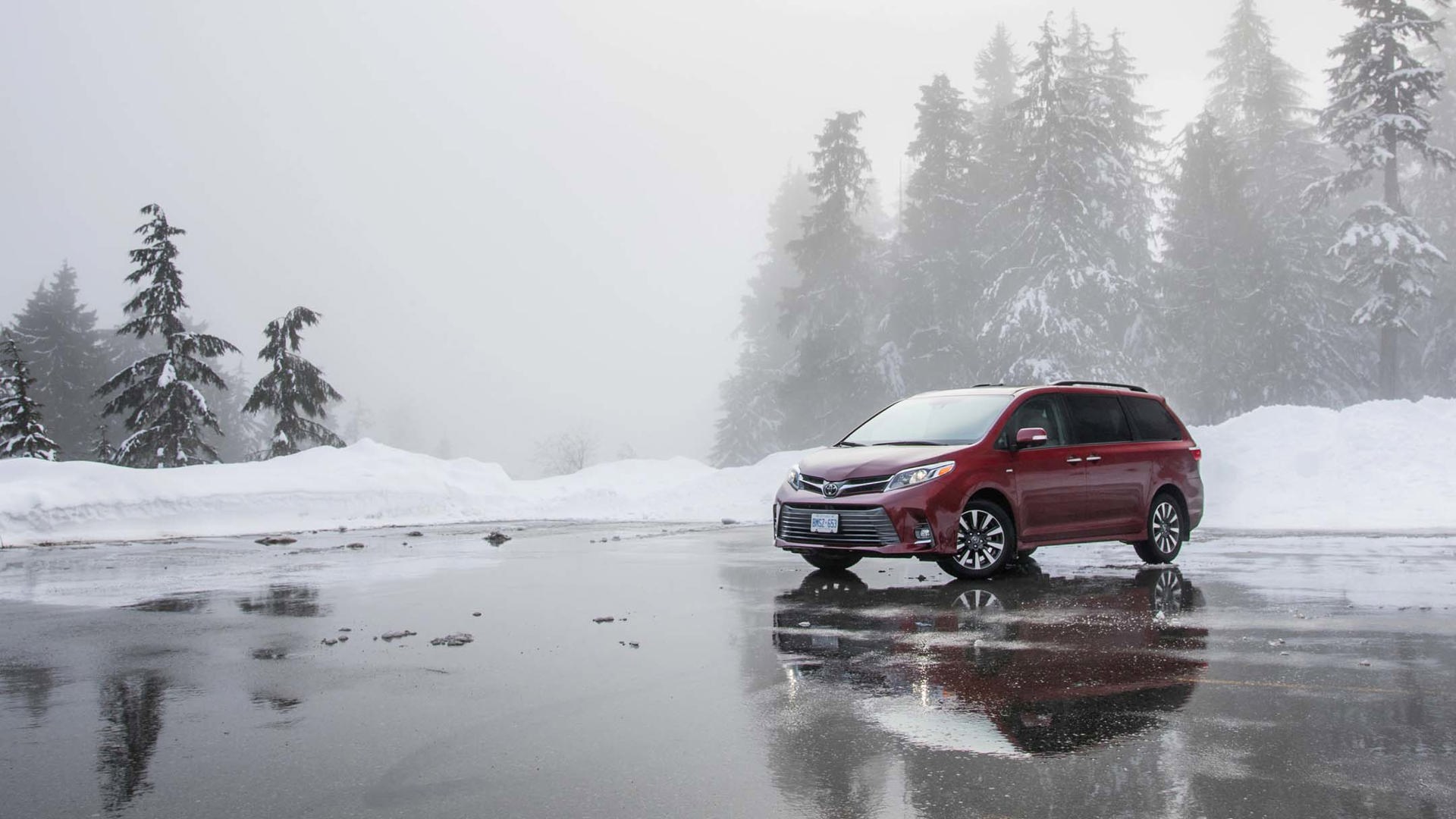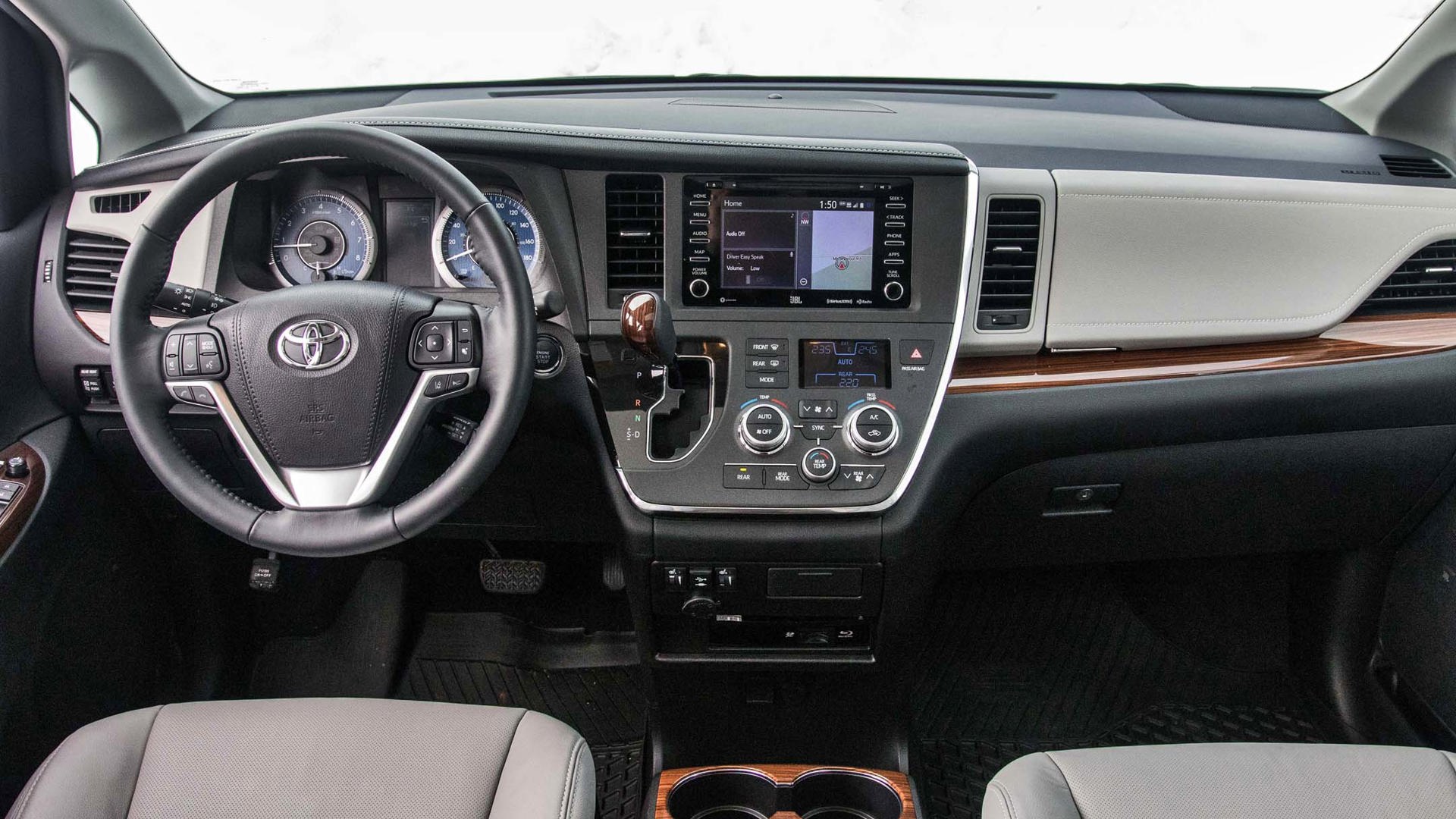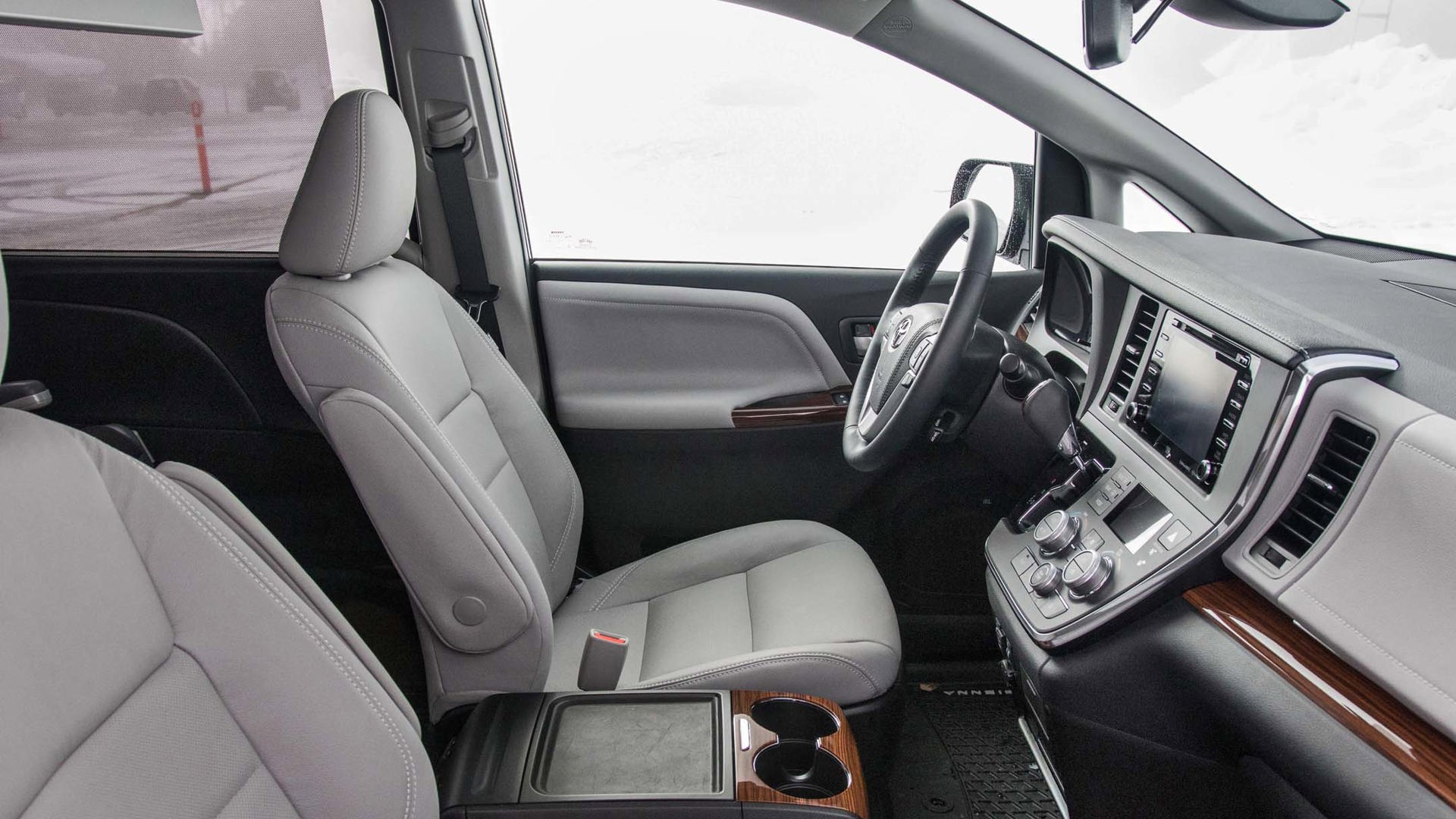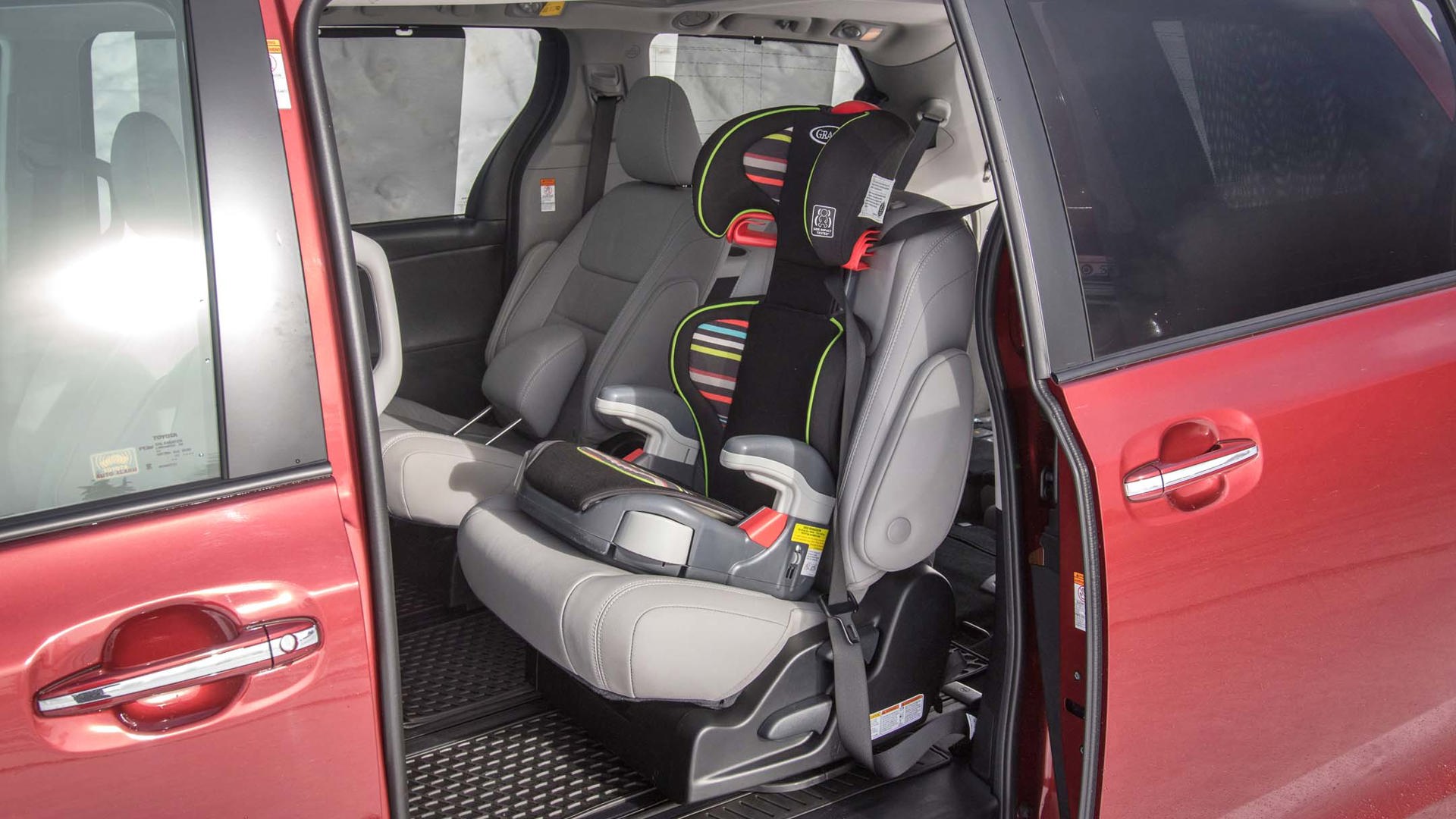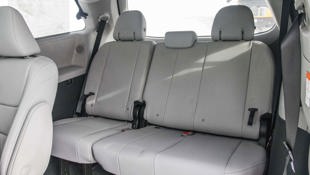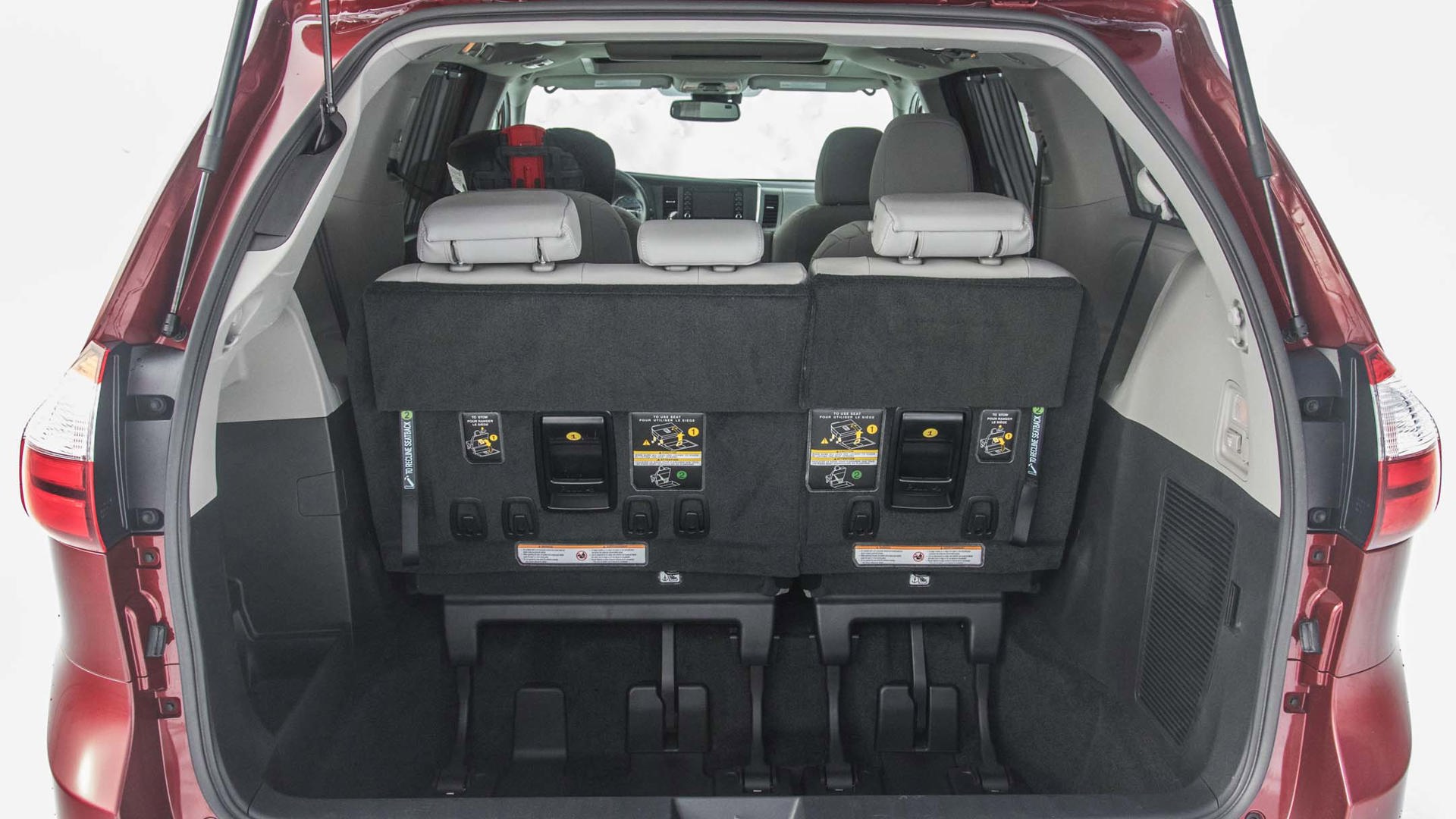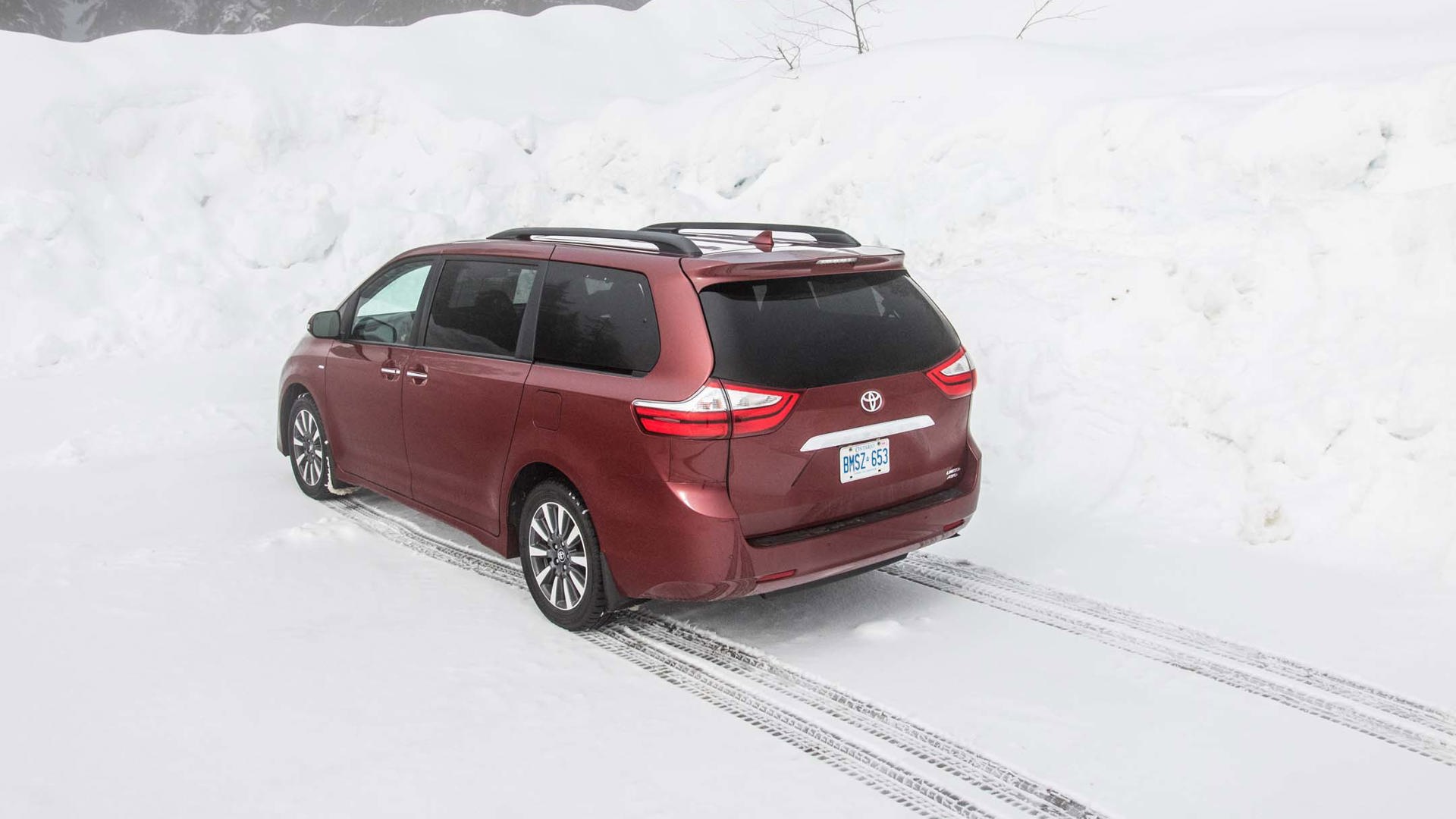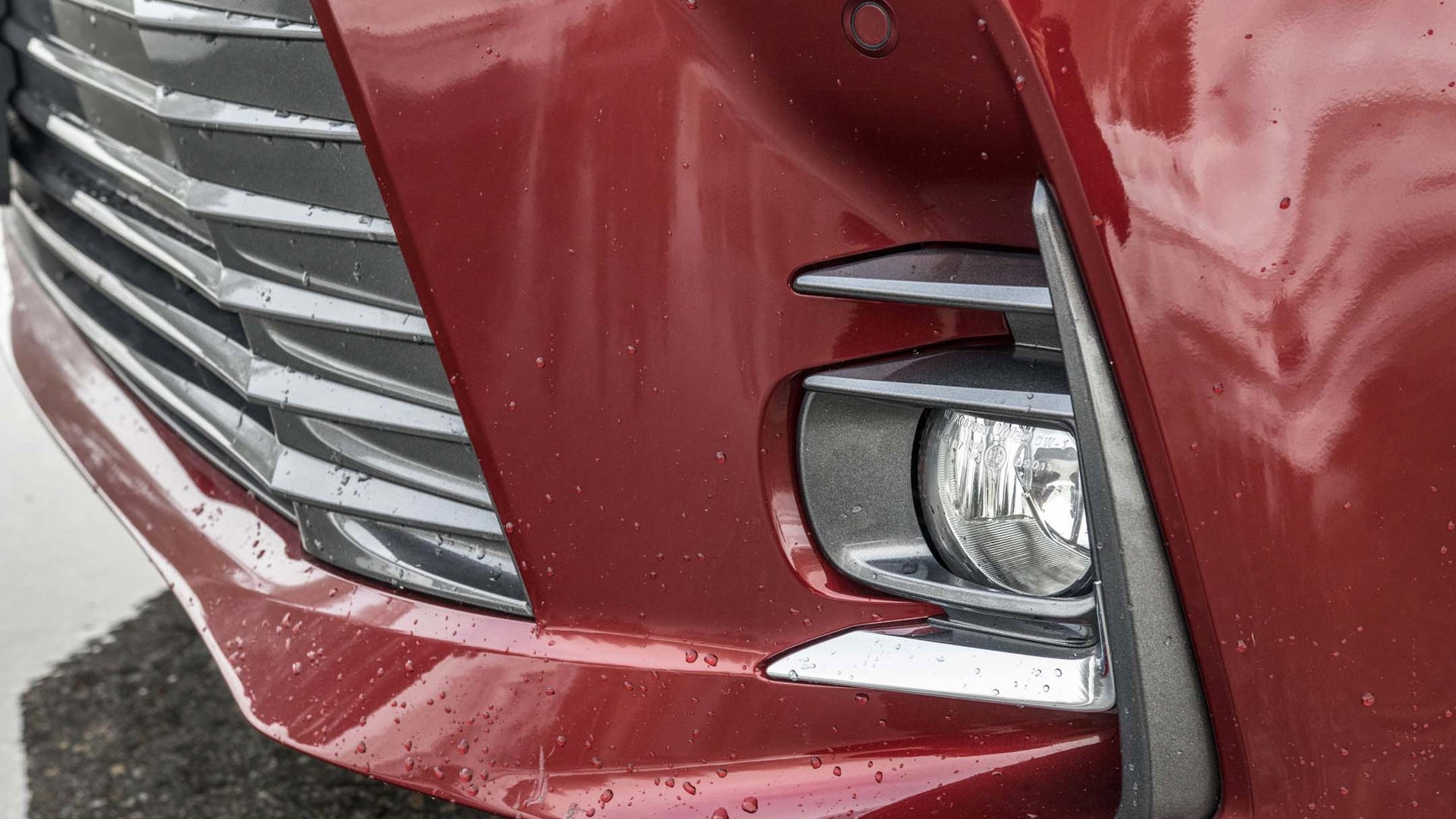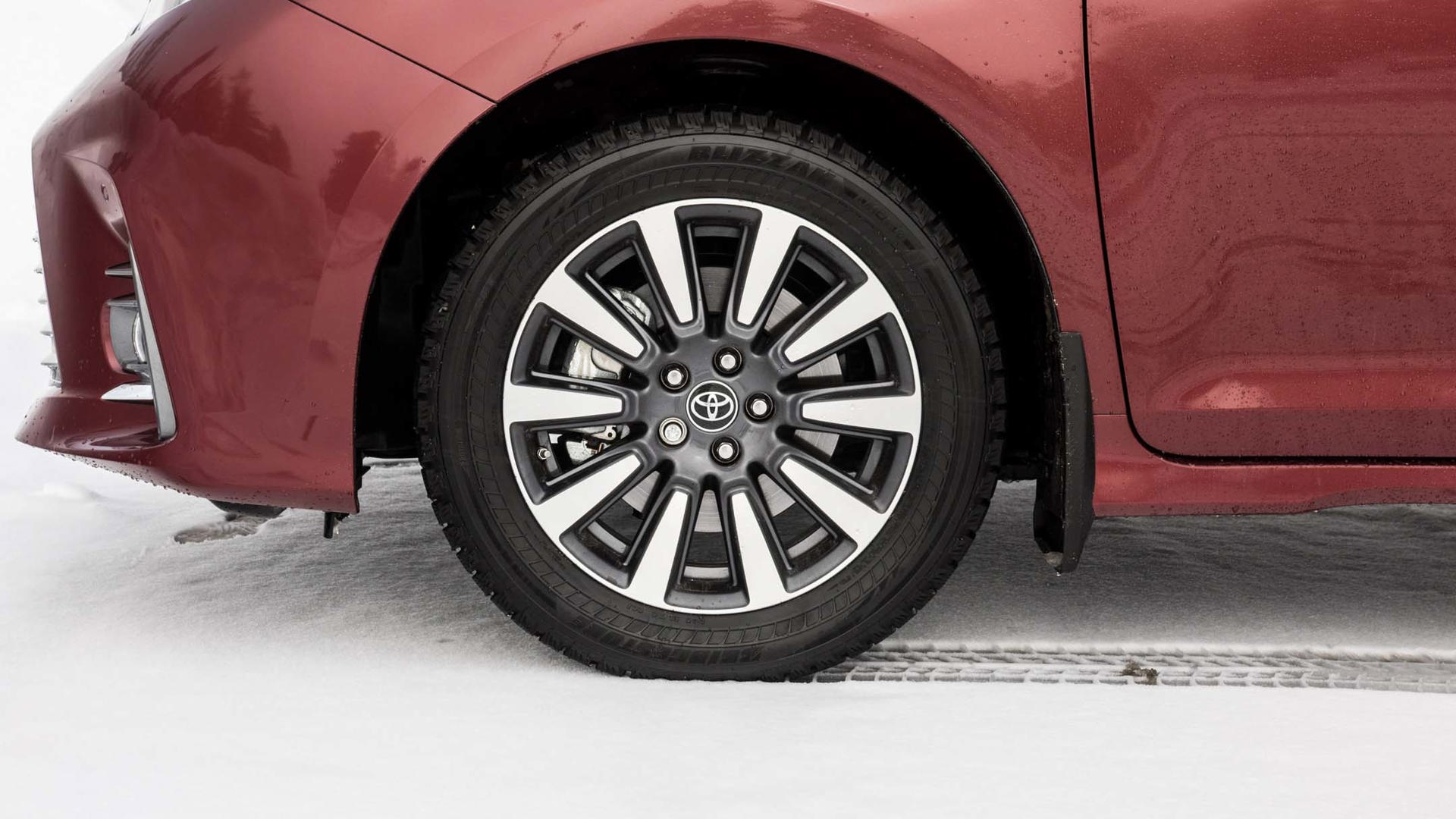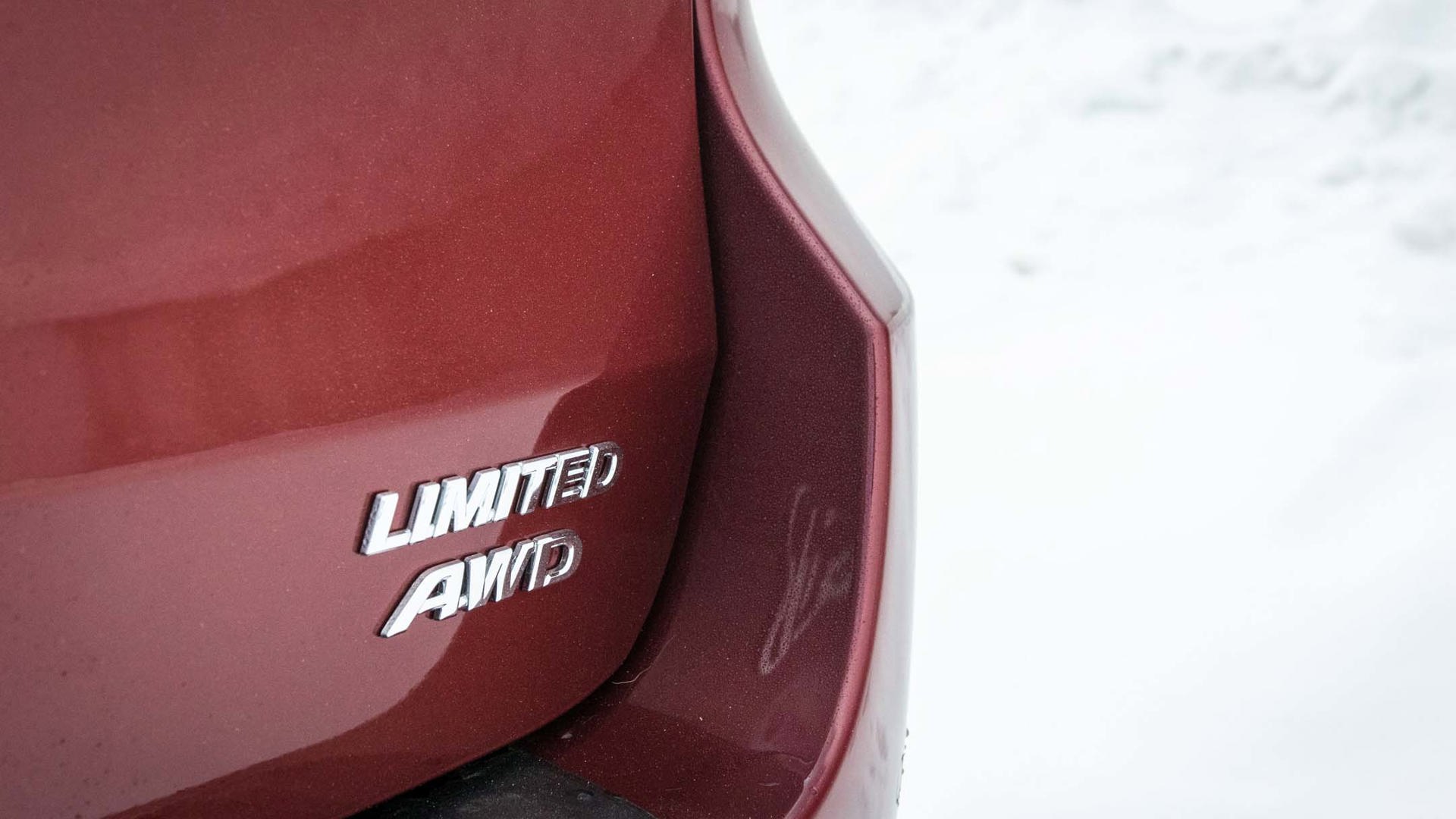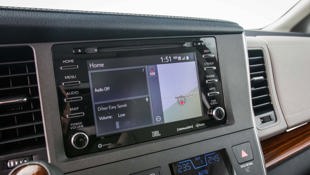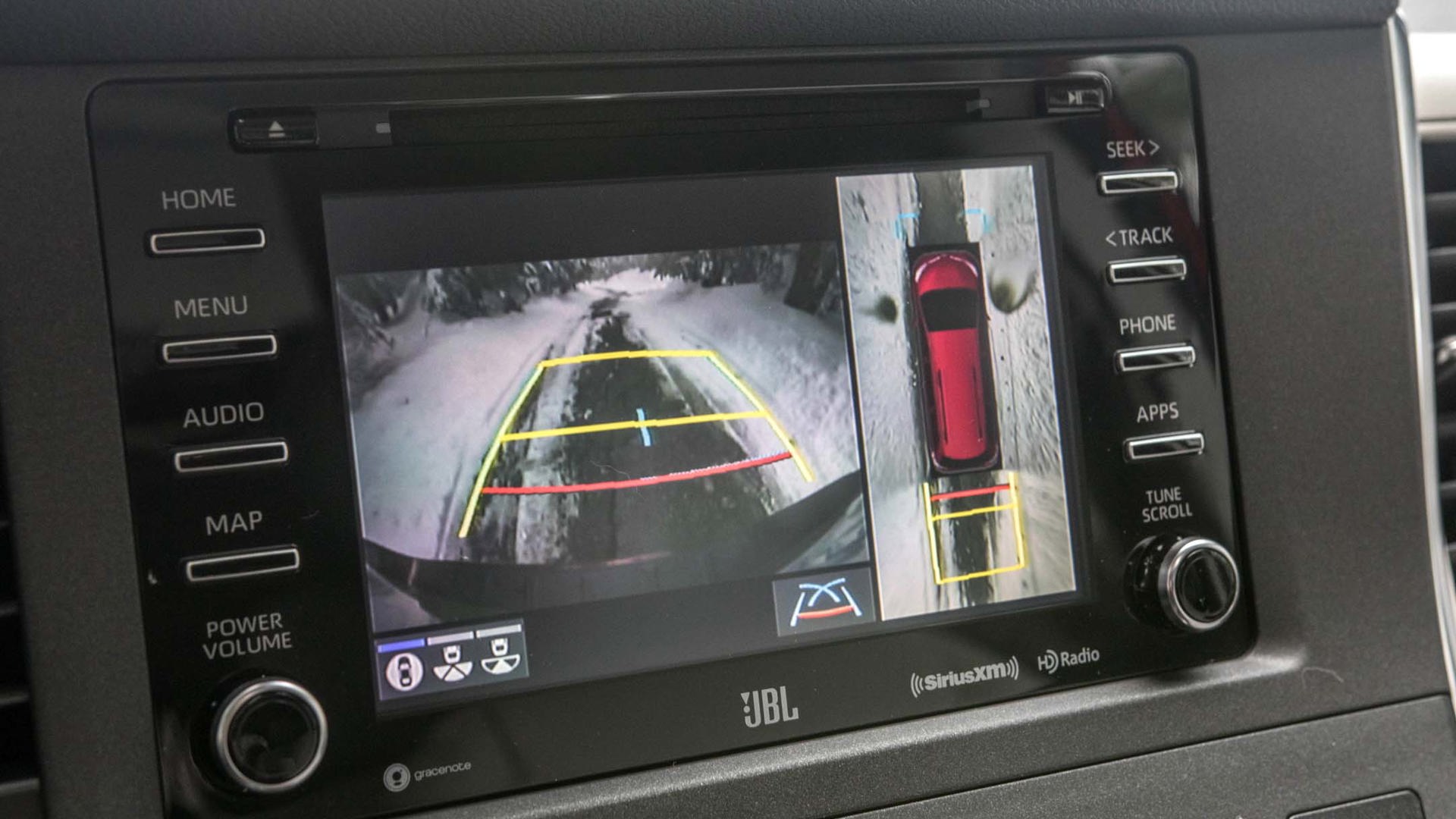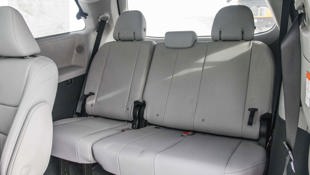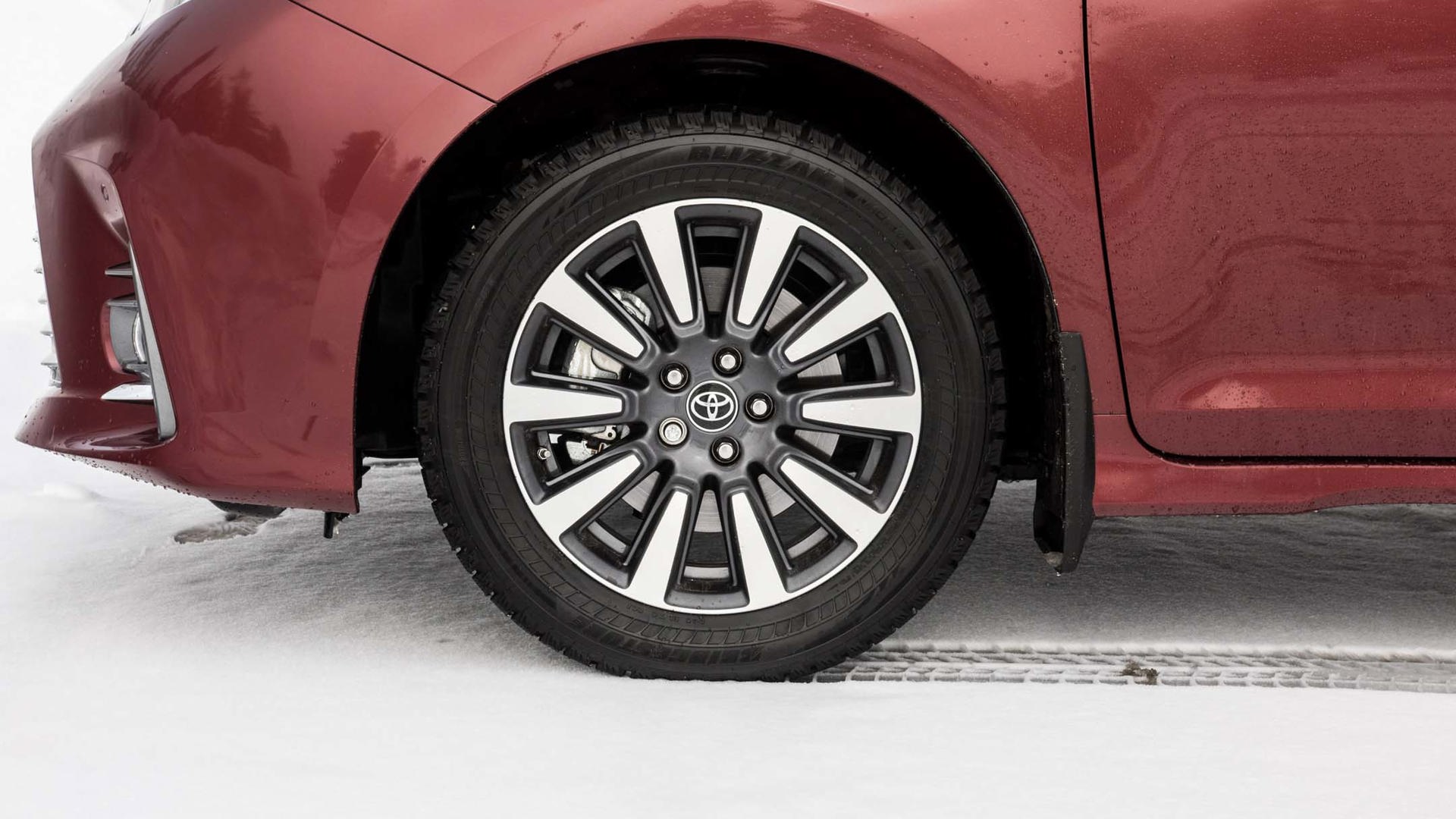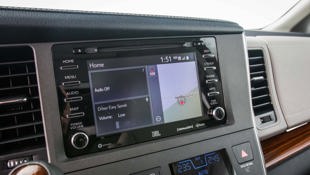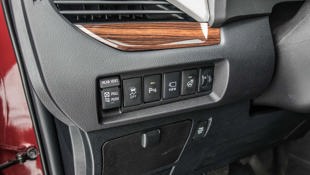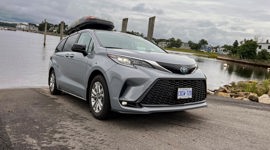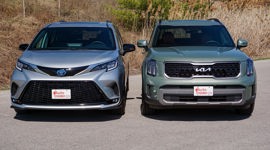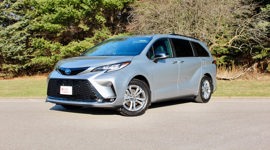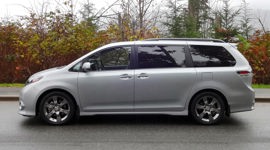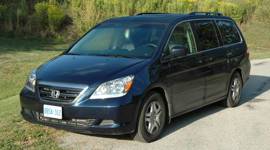 AutoTrader SCORE
AutoTrader SCORE
-
STYLING6/10
-
Safety7/10
-
PRACTICALITY10/10
-
USER-FRIENDLINESS8/10
-
FEATURES6/10
-
POWER8/10
-
COMFORT8/10
-
DRIVING FEEL7/10
-
FUEL ECONOMY6/10
-
VALUE7/10
Anyone old enough to be interested in minivan ownership will doubtless remember feeding quarters into an arcade machine proudly emblazoned with the words “Sega Rally”. A touchstone from the golden age of arcade games, Sega Rally featured real steering wheels and pedals, side-by-side racing action, and a pretty exiting Toyota.
Friendly, capable, and likeable. It is the dad bod of interiors.
When’s the last time you could say that? The Celica All-Trac featured in Sega Rally predated the Subaru WRX’s arrival on our shores, and showed just how useful all-wheel-drive could be when tackling slippery rally stages. Decades later, I can’t think of anything in the Toyota range to match it. They’ve got a pretty wild box-flared Yaris for use in the World Rally Championship, but there’s certainly no street version.
Instead, consider this huge burgundy mini-van, which looks a bit like something King Kong would use to trim his nostril hairs. In the shrinking minivan market, the Sienna’s pretty much the only option if you’re looking for all-wheel drive. Competing manufacturers seem to have dismissed all-wheel drive as a shallow point in the quickly evaporating water hole, and diverted their R&D dollars towards trying to develop new and creative ways to attach fake grilles to crossovers.
Toyota, already an expert in turning the front end of a car into a Philishave product, persists. As a result, you can get the stalwart 2018 Toyota Sienna in LE and XLE trims, each with the seven-seat layout.
Why not a mid-row bench seat? Well, perhaps Toyota’s market research shows that an AWD Sienna is more likely to be used by parents with older kids, who will each prefer their own seat. Two up-front, two in the middle, and one-point-five in the rear seat – and off to the ski hill we go.
Compared to the Honda Odyssey, a main rival, the Sienna has long felt laid out for slightly older families. If your kids are of an age where Cheerios are still being dropped between the seats, then perhaps the Odyssey’s clever on-board vacuum cleaner is more useful for the preschool run. If you’re the chauffeur of the soccer team on away games, then the Sienna’s slightly roomier accommodations are where it’s at.
You’d never notice that the Sienna’s all-wheel drive system was eating up any of its interior space. At 1,100 L the rear luggage well is slightly better than the Odyssey, which is engineered to be front-wheel-drive only. The rear seats can be folded for extra room, and if you’re a family of four who camps regularly, the Sienna’s colossal 2,470L behind the second row makes it practically a mobile log cabin.
Note that the third row can be a little wobbly when folding and unfolding, and the second-row seats are a bit of a pain to remove. Also, and this is perhaps a pretty specific complaint, if you plan on keeping the third row folded for most usage, all those hooks on the seatbacks become floor. If you’ve got to crawl into the back to load up stuff, it’s murder on your knees.
Further practical considerations for rear-seat haulage include a sliding second row that works with a child seat belted in, and power outlets for the second-row passengers. There are too few USB outlets here, however – any modern kid-hauler should be outfitted like a commercial airliner. The entertainment package includes a 16.4” widescreen monitor, but in an age when young kids use iPads and older kids are busily texting poop emojis, is this not somewhat outdated technology? It’s there if you need it.
For front seat passengers, the Sienna is as conventional as they come. The gauges, the buttons, the little LCD display for the air-conditioning controls – I’d hesitate to call it old-fashioned, but the Sienna is certainly a lot less glitzy that some of the modern seven-seater crossovers that are tempting families away from minivans like this.
Comfort is excellent, and ergonomics are pretty good. The gated shifter and foot-activated parking brake are the sort of thing that’ll never give you pause when you’re stopping in a hurry to sprint for the school pickup like you were a TV cop going after a perp. The same goes for Toyota’s Entune system, which features hardly the prettiest displays on the market, but continues to be very straightforward to use.
On the whole, everything about the Sienna is a little dated, but friendly, capable, and likeable. It is the dad bod of interiors.
However, for some unfathomable reason, the world of minivans has been undergoing the weirdest sort of arms race imaginable. The Odyssey now comes with a 280 hp 3.5L V6, the hybrid version of the Pacifica is cranking out 260 hp, and the Sienna trumps them all with a near-300 hp rating. Add in the new eight-speed automatic transmission and all-wheel drive, and this big box store will waltz to 100 km/h in a little under seven seconds.
Remember that Celica All-Trac? It’d take about seven and a half seconds in street form. And that’s a rally car!
So don’t worry, Brian O’Conner, just because you had to trade in your Supra for a minivan doesn’t mean you can’t show Toretto some taillights. For the rest of us, be assured that passing a semi-trailer on an uphill section during your summer cross-Canada tour should be a cinch. You never had me. You never had your truck.
Straight-line performance aside, the Sienna is a decidedly squishy proposition to drive. The Honda is a little crisper; it’s akin to the dynamic difference between a Camry and an Accord. Not that minivan ownership is about bliss in the corners, but just expect your Sienna to encourage a relaxed pace. It’s not like a Highlander dances any better.
This being an all-wheel-drive machine, let us consider grip a little further. First, this Sienna had proper winter tires fitted: Bridgestone Blizzaks. Secondly, after some romping around atop a ski hill to prove the effectiveness of the all-wheel drive system, a freak snowstorm provided a happy opportunity to test the Sienna in the real world.
Kids, if your parents are considering buying one of these things, then bad news. You will never miss a school day again. You will be one of the few stuck indoors watching a filmstrip about the mating habits of the ptarmigan, while everyone else Instagrams selfies of themselves with snowmen and sings that song from Frozen over and over again ad nauseum.
On a short section of snow-covered highway, the Sienna sailed past several abandoned cars, including a pickup and a Porsche 911. I had some sympathy for the driver of the Ford Ranger (it was an older, rear-drive model), but as for the Carrera 4? If you can afford to check all the options boxes except the one that puts proper footwear on your Porsche, a harassed-looking parent in a Toyota minivan is going to laugh at you.
Although perhaps we’ll be laughing more ruefully when it comes time to fill the Sienna up. That new eight-speed transmission is an improvement, but the main drawback of an all-wheel drive system is added sapping of power, and some additional weight. The Sienna’s system doesn’t really assist with cornering – no torque-vectoring here – but is really only useful when crawling up a slippery slope, or starting off from a stop.
Official fuel economy ratings for the Sienna are almost 1.0 L/100 km worse than the regular Odyssey. As this XLE version is directly comparable to the nine-speed Odyssey Touring, the gap gets even a little wider. In the real world, the Sienna was burning close to 15.0 L/100 km in mixed mileage, thanks in part to the cold weather.
So there’s your penalty: grip at the cost of efficiency. And, while we’re at it, grip at the cost of technology, some dynamic superiority, and let’s not pretend the styling is going to draw admiring glances.
Like those old arcade games, the Sienna is a box you could easily fill with some happy memories. I like its unfussy nature; and where its age shows, perhaps some of the old ways still work.
However, Toyota doesn’t make the Celica All-Trac anymore – because the market shrank, and the profits weren’t there, and there wasn’t any need to spend money updating something that people weren’t buying. We know modern families are turning away from sedans and minivans, and choosing crossovers time and time again. So yes, it’s still possible to buy an all-wheel-drive minivan in Canada, if it suits your needs. But for how much longer?
| Engine Displacement | 3.5L |
|---|---|
| Engine Cylinders | V6 |
| Peak Horsepower | 296 hp @ 6,600 rpm |
| Peak Torque | 263 lb-ft @ 4,700 rpm |
| Fuel Economy | 13.4/9.6/11.7 L/100km city/hwy/cmb |
| Cargo Space | 1,100 L |
| Model Tested | 2018 Toyota Sienna XLE AWD |
| Base Price | $46,090 |
| A/C Tax | $100 |
| Destination Fee | $1,785 |
| Price as Tested | $55,175 |
|
Optional Equipment
$7,200 – Limited Package (heated steering wheel, 10-speaker audio, 8" display, navigation, front and rear parking assist, dual power moonroof, rear seat entertainment)
|
|

